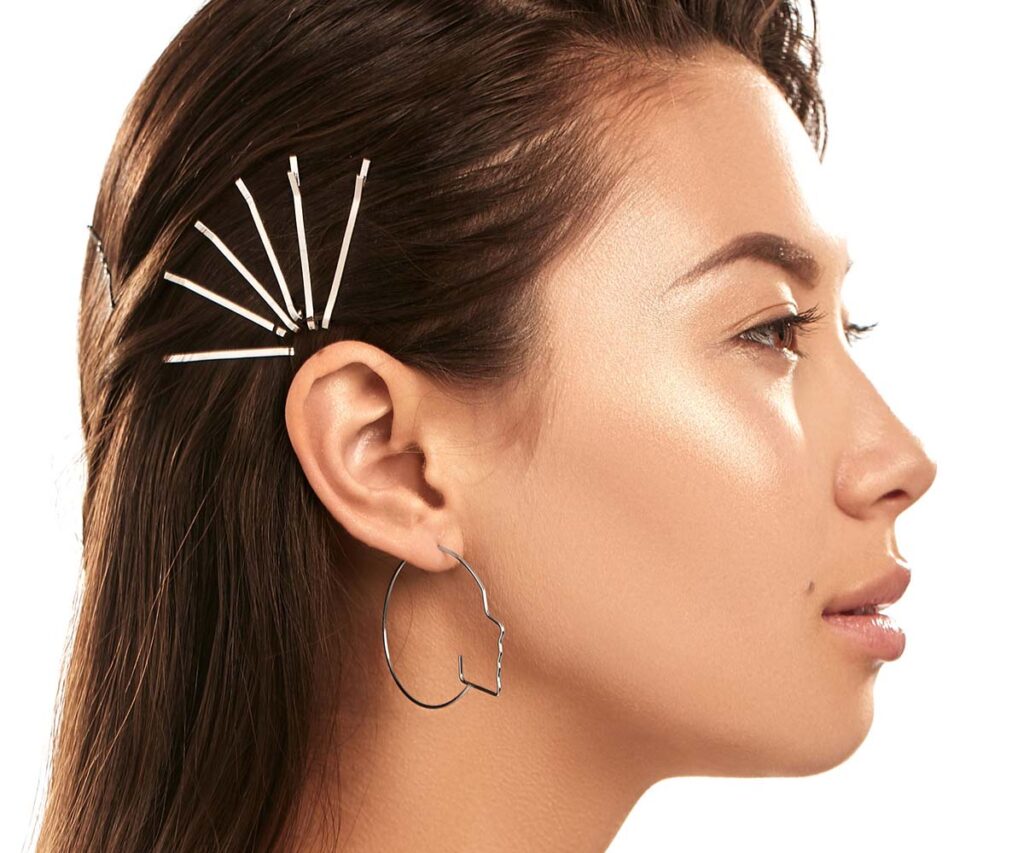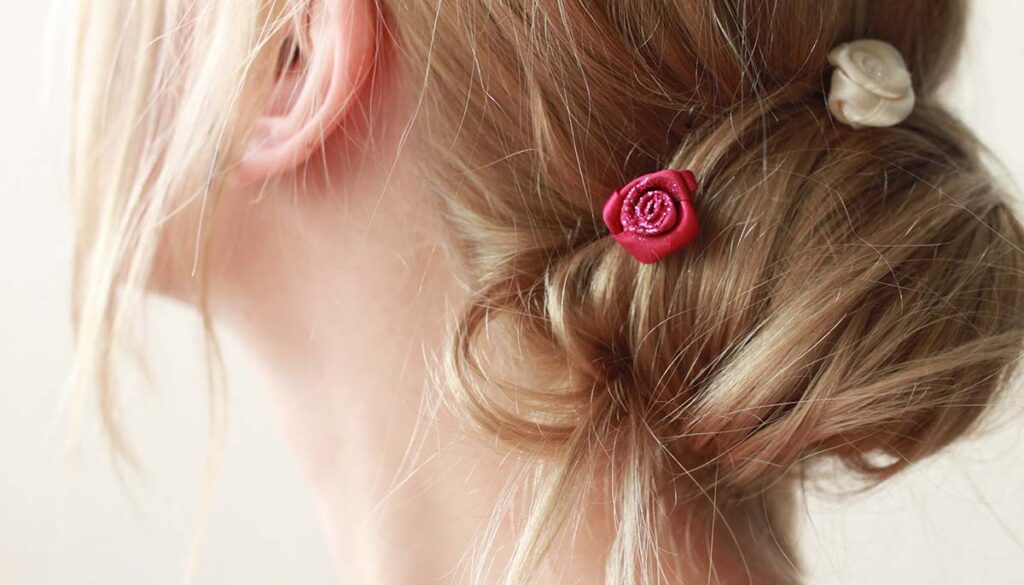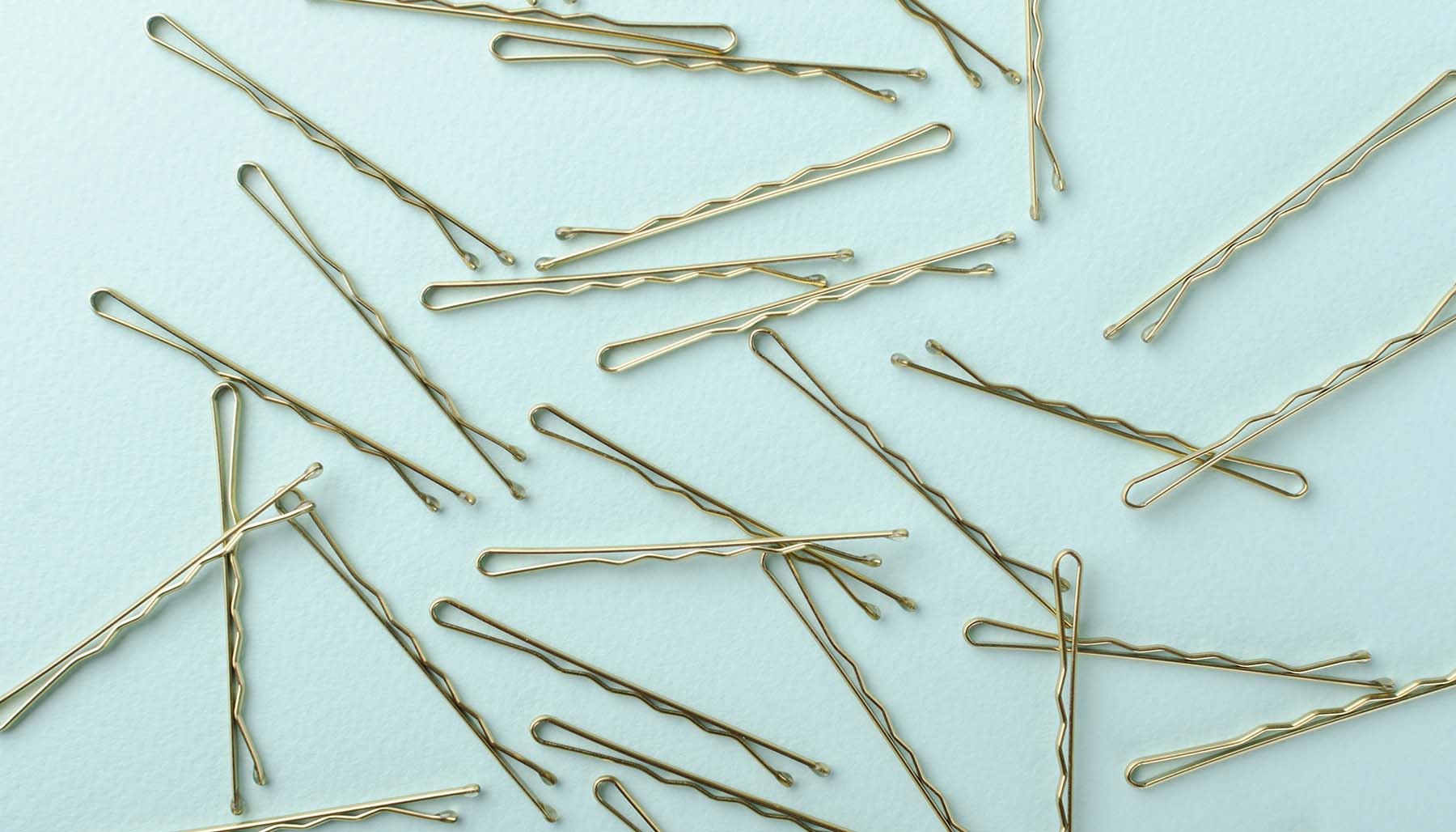The humble bobby pin has been a staple on our dressing tables–and in our junk drawers–for over a century. You won’t find many households without at least a few of these ubiquitous bits of metal.

Ridges Up or Down?
Everyone agrees that bobby pins are great. Where they don’t agree is whether to use them with the ridges up or down. A bobby pin is a simple tool with a flat side (also called the blade), a ridged side, and an open loop at one end called the eye.
One school of thought holds that you should put the flat side down so that it slides more easily along your scalp. The ridged side can hold more hair while still maintaining a firm grip on your coiffure.
Other folks will tell you that that ridges-down is the only way to go. Fans of this method say that the ridged side helps hold the hair more effectively, while the flat side presents a smooth, polished appearance.

Who is right? In my experience, it depends on your hair texture more than anything else. If you have thick, wavy, curly, or kinky hair, then ridges-up might be better for you. Meanwhile, if you have thin, fine, or stick-straight hair (like me) then ridges-down does seem to help secure those flyaways.
Where Does the Name Come From?
The concept of a hairpin is not new, but the bobby pin as we know it originated in the 1920s in America. That’s when women began bobbing their hair. Cosmetics manufacturer Luis Marcus invented the modern-day version of the hairpin. According to the Los Angeles Times, he made the original pins by hand and charged 35 cents for two. These days, you can get a tub of 500 pins for $6.99 on Amazon.
“There was talk of naming it the Marcus pin,” his daughter, Elaine Marcus, told the paper when her father passed away at the impressive age of 102.
“But he named it for bobbed hair.”
In the UK, bobby pins are most often called kirby grips thanks to the hairpins made by Kirby, Beard & Co. beginning in 1862. The term derives from the patented “Kirbigrip” brand name.
Can You Really Pick a Lock with a Bobby Pin?
Countless books, movies, and TV shows feature a scene where someone picks a lock with a bobby pin. Does that actually work? The short answer is… kind of. It’s a lot harder than it looks!

You actually need two pins–a tension and a rake or pick. Most media gets it totally wrong by showing just one bobby pin. By bending the two pins in a specific way and then carefully pressing up on the pins, it’s possible to open a lock without a key. However, we don’t recommend trying this at home.
RELATED: Hairstyle Tips and Ideas
DIY Decorated Bobby Pin Ideas
Bobby pins are meant to be invisible, but many of us have found ways to turn them into fashion statements. While you can pick up mass-market decorated bobby pins for a bargain, making your own can be a fun, inexpensive craft project.
I really like the look of using thin beading wire to secure an oversized faux pearl to the eye of my bobby pins. Crystals and glass beads work too! It’s a great way to dress up an updo. Just make sure that you secure the ends of the wire by coiling it very tightly and snipping it as close as possible with jewelry pliers. A dab of clear nail polish can help keep the ends covered.

Another super quick and easy project? Match your bobby pins to your manicure! Slip half a dozen pins over a thin piece of cardboard–you can cut up an old cereal box for this–and then paint them with two coats of your favorite nail polish, allowing them to dry between coats.
For a boho look, try using hot glue or E6000 (a powerful craft adhesive) to attach small paper or fabric flowers to your bobby pins. Another bold look I’ve been hoping to try is achieved by cutting a small piece of thin leather into fine fringe and gluing the top edge along the length of a bobby pin.













